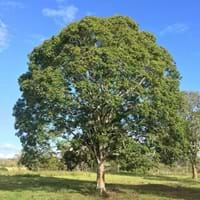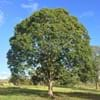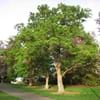Life Span
Perennial
Perennial
Origin
Southeastern Asia
Africa, India, Southeast Asia
Types
Nilambur teak, Adilabad teak
Sweet Tamarind, Australian tamarind, Manila tamarind, Velvet tamarind, Spanish Tamarind
Number of Varieties
Not Available
Habitat
Hillside, tropical environments
Subtropical climates, Tropical regions
USDA Hardiness Zone
10-15
9-11
AHS Heat Zone
12-10
Not Available
Sunset Zone
H1, H2
Not Available
Habit
Upright/Erect
Spreading
Flower Color
White, Ivory
Red, Yellow
Flower Color Modifier
Bicolor
Bicolor
Fruit Color
Tan, Sandy Brown
Brown
Leaf Color in Spring
Green, Light Green
Green
Leaf Color in Summer
Green
Dark Green, Green
Leaf Color in Fall
Green
Dark Green, Yellow green
Leaf Color in Winter
Not Available
Dark Brown, Green
Plant Season
Not Available
Spring, Summer, Fall, Winter
Sunlight
Full Sun, Partial Sun
Full Sun, Partial Sun
Type of Soil
Loam, Sand
Clay, Loam, Sand
The pH of Soil
Acidic, Neutral
Acidic
Soil Drainage
Well drained
Average
Bloom Time
Summer, Late Summer, Early Fall
Late Spring
Tolerances
Not Available
Drought, Salt
Where to Plant?
Ground
Ground
How to Plant?
Seedlings, Transplanting
Layering, Seedlings, Transplanting
Plant Maintenance
Medium
Low
Watering Requirements
Water daily during growing season
Do Not over Water, Keep the ground moist but not water-logged
In Summer
Lots of watering
Lots of watering
In Spring
Moderate
Moderate
In Winter
Average Water
Average Water
Soil pH
Acidic, Neutral
Acidic
Soil Type
Loam, Sand
Clay, Loam, Sand
Soil Drainage Capacity
Well drained
Average
Sun Exposure
Full Sun, Partial Sun
Full Sun, Partial Sun
Pruning
Remove dead or diseased plant parts, Remove deadheads, Requires very little pruning
Remove damaged leaves, Remove dead branches, Remove dead leaves
Fertilizers
All-Purpose Liquid Fertilizer
6-6-6 or 8-8-8
Pests and Diseases
Pests and diseases free
Aphids, Borers, Mealybugs, Onion thrips, Root weevil, Soft scales, Whiteflies
Plant Tolerance
Not Available
Drought
Flower Petal Number
Single
Single
Foliage Texture
Coarse
Bold
Foliage Sheen
Matte
Matte
Attracts
Birds, Woodpeckers
Beetles, Birds, Scale Insects
Allergy
Eye irritation, Red eyes
Diarrhea, Hives, Nausea, Vomiting
Aesthetic Uses
Cottage Garden
Beautification
Beauty Benefits
For treating wrinkles, Making cosmetics
Glowing Skin, Good for skin, Improve skin tone, Reduces ageing, Skin cleanser
Edible Uses
Sometimes
Yes
Environmental Uses
Absorbs greenhouse gases, Nesting sites for birds, Shadow Tree
Food for animals, Food for birds, Food for insects, Nesting sites for birds
Medicinal Uses
Anemia, Inflammation, Swelling
Antioxidants, Inflammation, Rheumatism, Skin Disorders, Sore throat
Part of Plant Used
Flowers, Root bark
Flowers, Fruits, Leaves
Other Uses
Used in construction, Used in pencil industry, Wood is used for making furniture
Culinary use, Used as a nutritious food item, Used as Ornamental plant, Used for its medicinal properties
Used As Indoor Plant
No
No
Used As Outdoor Plant
No
Yes
Garden Design
Feature Plant, Shade Trees, Tropical
Edible, Fruit / Fruit Tree, Shade Trees
Botanical Name
TECTONA grandis
Tamarindus indica
Common Name
East Indian Oak, Teak
Tamarind tree, Tamarind
In Hindi
सागौन
इमली का पेड़
In French
Teak
tamarinier
In Spanish
Teak
tamarindo
In Greek
Teak
δέντρο Tamarind
In Portuguese
Teak
tamarindo
In Polish
Teak
drzewo tamaryndowca
In Latin
Teak
tamarind ligno
Phylum
Magnoliophyta
Magnoliophyta
Class
Magnoliopsida
Magnoliopsida
Family
Verbenaceae
Fabaceae
Clade
Angiosperms, Asterids, Eudicots
Angiosperms, Eudicots, Rosids
Tribe
Not Available
Detarieae
Subfamily
Not Available
Caesalpinioideae
Number of Species
Not Available
Season and Care of Teak and Tamarind tree
Season and care of Teak and Tamarind tree is important to know. While considering everything about Teak and Tamarind tree Care, growing season is an essential factor. Teak season is Not Available and Tamarind tree season is Not Available. The type of soil for Teak is Loam, Sand and for Tamarind tree is Clay, Loam, Sand while the PH of soil for Teak is Acidic, Neutral and for Tamarind tree is Acidic.
Teak and Tamarind tree Physical Information
Teak and Tamarind tree physical information is very important for comparison. Teak height is 2,740.00 cm and width 1,220.00 cm whereas Tamarind tree height is 1,800.00 cm and width 800.00 cm. The color specification of Teak and Tamarind tree are as follows:
Teak flower color: White and Ivory
Teak leaf color: Green and Light Green
Tamarind tree flower color: Red and Yellow
- Tamarind tree leaf color: Green
Care of Teak and Tamarind tree
Care of Teak and Tamarind tree include pruning, fertilizers, watering etc. Teak pruning is done Remove dead or diseased plant parts, Remove deadheads and Requires very little pruning and Tamarind tree pruning is done Remove damaged leaves, Remove dead branches and Remove dead leaves. In summer Teak needs Lots of watering and in winter, it needs Average Water. Whereas, in summer Tamarind tree needs Lots of watering and in winter, it needs Average Water.





